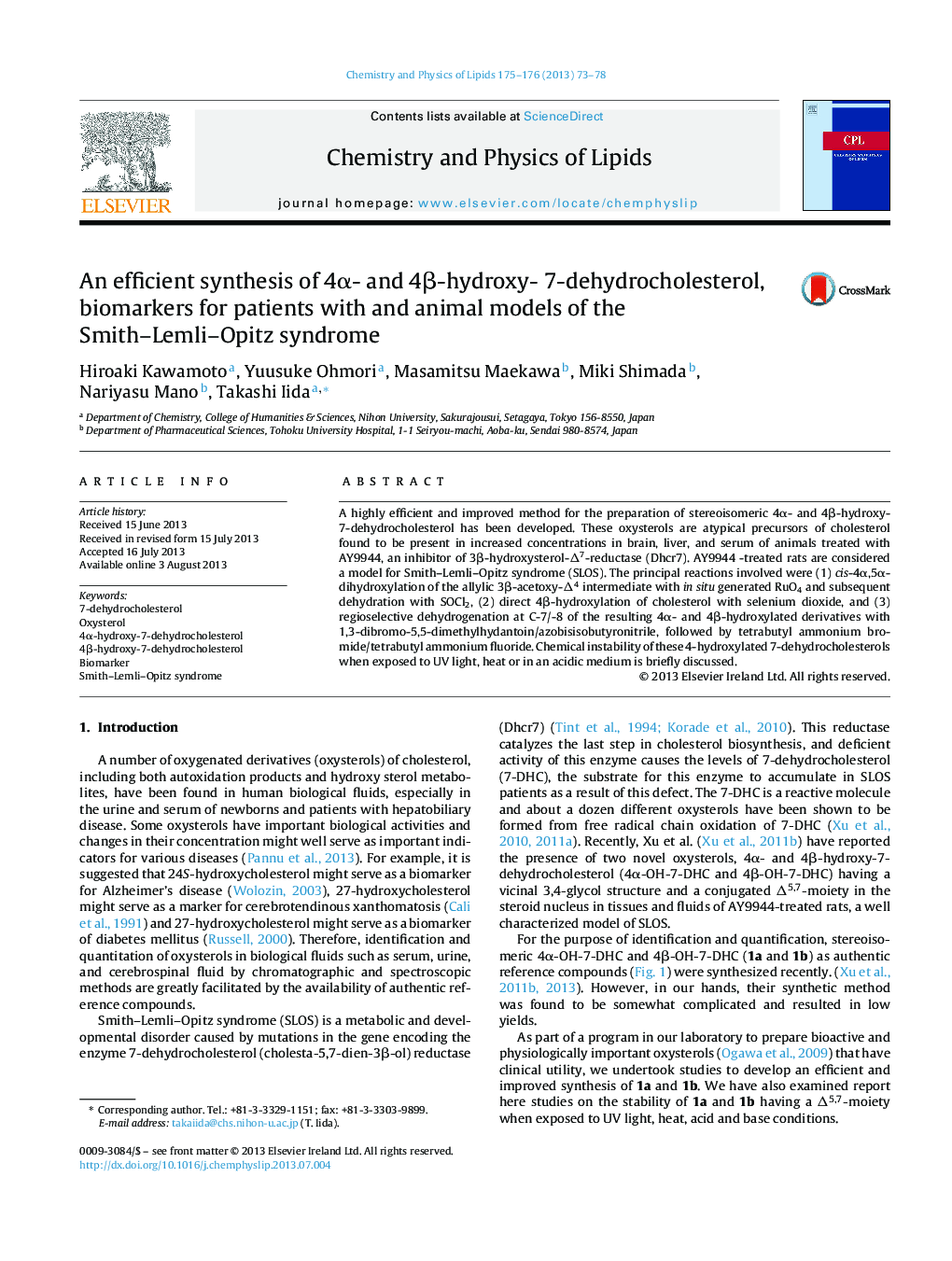| Article ID | Journal | Published Year | Pages | File Type |
|---|---|---|---|---|
| 1251852 | Chemistry and Physics of Lipids | 2013 | 6 Pages |
•Synthesis of stereoisomeric 4α- and 4β-hydroxy-7-deoxycholesterols is described.•Their structures were confirmed by MS and NMR analysis.•Stability of these compounds against UV, heat, acid and base is discussed.•These compounds would be useful as biomarkers of Smith–Lemli–Opitz syndrome.
A highly efficient and improved method for the preparation of stereoisomeric 4α- and 4β-hydroxy-7-dehydrocholesterol has been developed. These oxysterols are atypical precursors of cholesterol found to be present in increased concentrations in brain, liver, and serum of animals treated with AY9944, an inhibitor of 3β-hydroxysterol-Δ7-reductase (Dhcr7). AY9944 -treated rats are considered a model for Smith–Lemli–Opitz syndrome (SLOS). The principal reactions involved were (1) cis-4α,5α-dihydroxylation of the allylic 3β-acetoxy-Δ4 intermediate with in situ generated RuO4 and subsequent dehydration with SOCl2, (2) direct 4β-hydroxylation of cholesterol with selenium dioxide, and (3) regioselective dehydrogenation at C-7/-8 of the resulting 4α- and 4β-hydroxylated derivatives with 1,3-dibromo-5,5-dimethylhydantoin/azobisisobutyronitrile, followed by tetrabutyl ammonium bromide/tetrabutyl ammonium fluoride. Chemical instability of these 4-hydroxylated 7-dehydrocholesterols when exposed to UV light, heat or in an acidic medium is briefly discussed.
